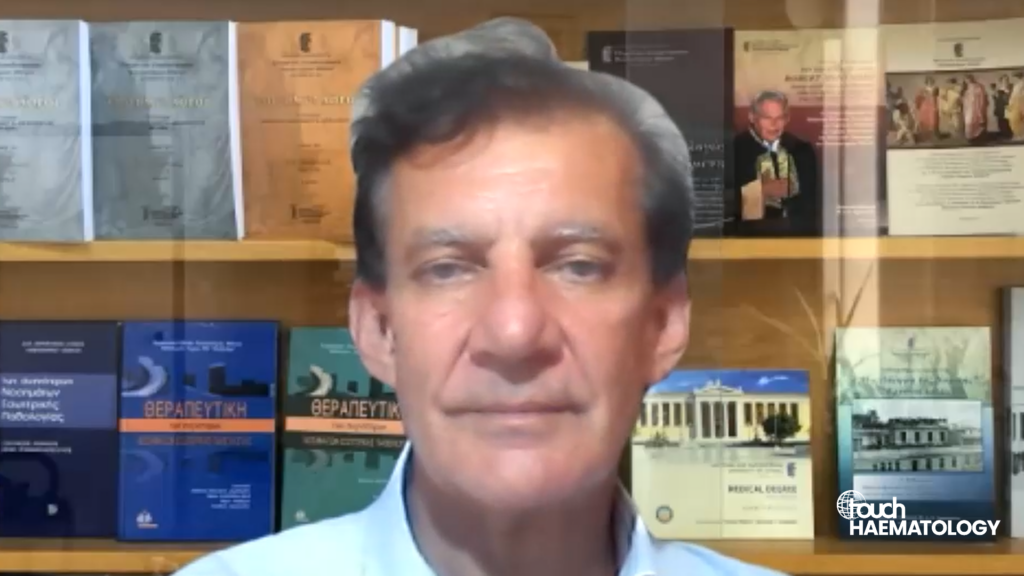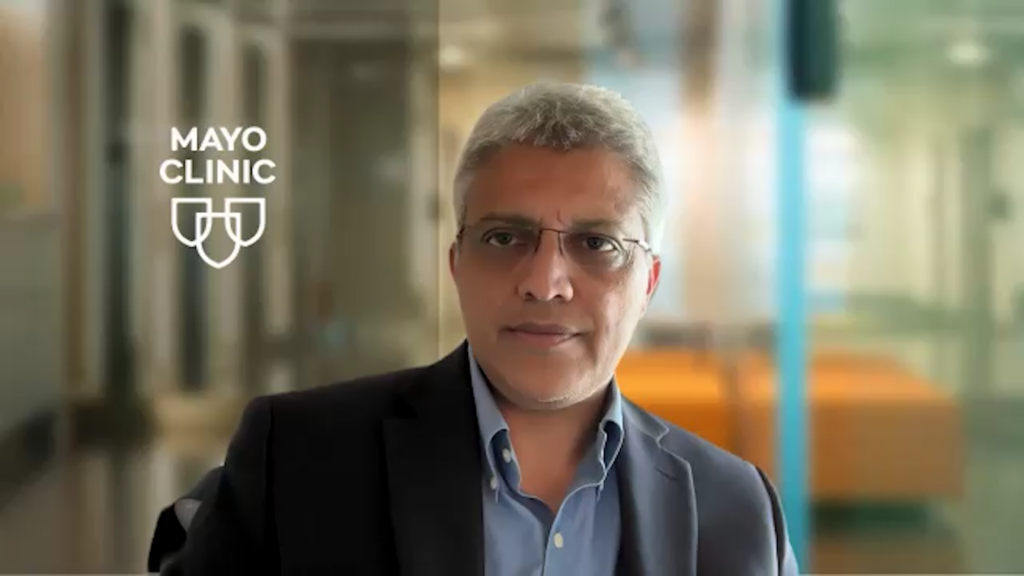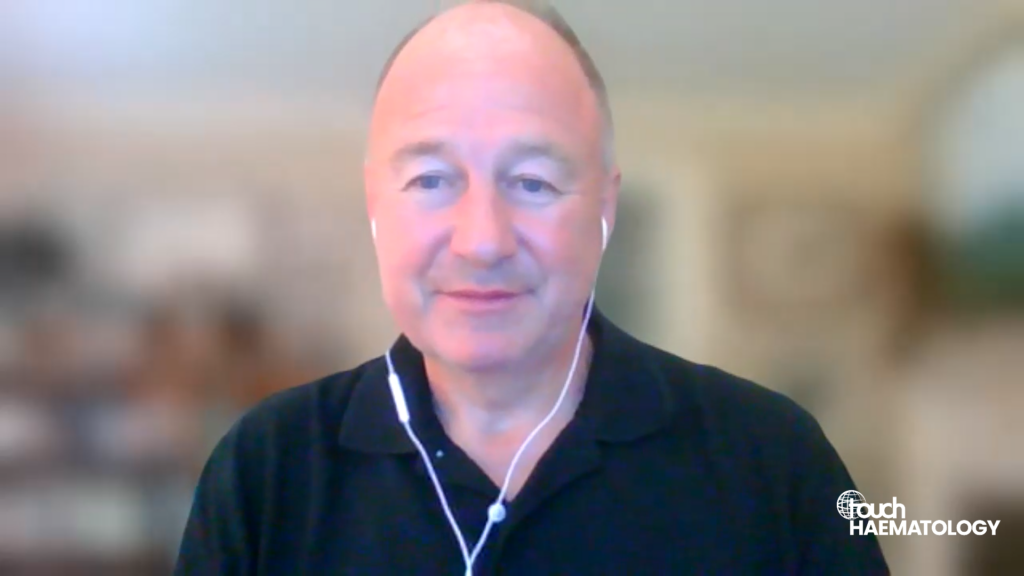 At #EHA2025, Dr Gurbaksh Kaur (Assistant Professor, Mount Sinai Hospital Tisch Cancer Institute, New York, NY, USA) presented updated results from the iMMagine-1 trial evaluating anitocabtagene autoleucel (AnitoCell), a novel BCMA-targeted CAR T cell therapy for patients with relapsed and/or refractory multiple myeloma. In this interview, Dr Kaur discusses the trial’s efficacy and safety findings, the unique D-domain CAR construct, and the broader implications for sequencing immunotherapies in myeloma. She also shares insights into long-term outcomes seen with other BCMA-directed approaches and looks ahead to key data in earlier-line settings.
At #EHA2025, Dr Gurbaksh Kaur (Assistant Professor, Mount Sinai Hospital Tisch Cancer Institute, New York, NY, USA) presented updated results from the iMMagine-1 trial evaluating anitocabtagene autoleucel (AnitoCell), a novel BCMA-targeted CAR T cell therapy for patients with relapsed and/or refractory multiple myeloma. In this interview, Dr Kaur discusses the trial’s efficacy and safety findings, the unique D-domain CAR construct, and the broader implications for sequencing immunotherapies in myeloma. She also shares insights into long-term outcomes seen with other BCMA-directed approaches and looks ahead to key data in earlier-line settings.
The abstract, ‘PHASE 2 REGISTRATIONAL STUDY OF ANITOCABTAGENE AUTOLEUCEL FOR RELAPSED AND/OR REFRACTORY MULTIPLE MYELOMA (RRMM): UPDATED RESULTS FROM IMMAGINE-1’ (Abstract: S201) was presented at the European Hematology Association (EHA) 2025 Congress from June 12-15th in Milan, Italy.
Q1. What distinguishes anitocabtagene autoleucel (anito-cel) from other BCMA-targeted CAR-T therapies for patients with relapsed and/or refractory multiple myeloma?
AnitoCell is a CAR-T cell therapy targeting BCMA using a CD3 zeta signalling domain and a 4-1BB costimulatory domain (CD137). What makes it unique among other CAR-T constructs is its binding domain – a novel synthetic protein called the D domain. D domains are triple alpha helical structures originally designed for simplicity and stability, then repurposed for therapeutic applications as antigen binders.
The construct is small and structurally simple, with minimal folding requirements, so this allows for higher transduction efficiency and high CAR expression. As a result, the total T cell dose administered can be lower. The simplicity of the D domain contributes to its stability and high expression while avoiding tonic signalling, due to rapid folding, absence of disulfide bonds, and a stable hydrophobic core.
Another key characteristic is its fast off-rate. This means the D domain detaches quickly from the BCMA target – a feature we believe contributes to effective tumour killing without prolonged inflammation. So, the combination of high surface expression and rapid dissociation may be important in achieving this balance.
Q2. Could you briefly summarize the study design, primary endpoints and key eligibility criteria for patients enrolled in the iMMagine-1 trial?
The phase II iMMagine-1 trial enrolled patients with relapsed or refractory multiple myeloma. Patients had to have previously received an immunomodulatory drug, a proteasome inhibitor and an anti-CD38 antibody, with at least three prior lines of therapy. All were refractory to their last line.
The primary endpoint was overall response rate, assessed by an independent review committee. Key secondary endpoints included complete response or stringent complete response, as defined by the 2016 IMWG criteria.
Q3. Please could you summarize the updated safety and efficacy results presented at EHA this year?
At a median follow-up of 12.6 months, with all patients followed for at least four months, the overall response rate was 97% and the complete response or better rate was 68%. A very good partial response or better was seen in 85% of patients.
As with other myeloma trials, we’re seeing that deeper responses continue to emerge with longer follow-up. When these results were presented at ASH 2024, the CR or better rate was 62% – now it’s 68%, and we expect further deepening over time.
Of the 117 patients who received an anito-cel infusion, 75% were evaluable for minimal residual disease (MRD) at a sensitivity of 10⁻⁵. Among those, 93% were MRD negative. The median time to first response and to MRD negativity was one month, indicating rapid and deep responses.
For progression-free survival, the estimated 6-month rate was 91.9% and the 12-month rate was 79.3%. The estimated overall survival was 96.6% at six months and 95.2% at 12 months. These data will continue to mature with ongoing follow-up.
In terms of safety, the most relevant toxicities are cytokine release syndrome (CRS) and immune effector cell-associated neurotoxicity syndrome (ICANS). CRS occurred in 85% of patients, but all were grade 1 or lower. No patients received prophylactic tocilizumab or dexamethasone. Fifteen percent had no CRS at all.
The median time to CRS onset was four days, with a median duration of two days. By day 7, 80% had no CRS or had resolution, and by day 10, that figure rose to 97%. Seventy-one percent required no dexamethasone or just a single dose for CRS management. There was one grade 5 event.
Q4. The study reports no delayed or non-ICANS neurotoxicities, including Parkinsonism and Guillain-Barré syndrome. How significant is this finding in the context of BCMA-targeted CAR-T therapies?
ICANS of any grade was seen in 8% of patients, and all cases resolved. There were no delayed or non-ICANS neurotoxicities observed, including Parkinsonism, cranial nerve palsies or Guillain-Barré syndrome. The median follow-up was 12.6 months. The median onset of neurotoxicity was seven days and the median duration was four days.
It may be that the D domain plays a role here. As I mentioned earlier, its fast off-rate allows the CAR to do what it needs to do, then detach quickly from the BCMA target, possibly avoiding prolonged activation or off-target effects. That’s one hypothesis.
Q5. What questions remain unanswered, and what further study is required?
Currently, anito-cel is being studied in the late-relapse setting. The IMAGINE-3 protocol is a randomized clinical trial that will look at its use earlier in the disease course – in patients with one to three prior lines of therapy.
As is often the case in myeloma, if a treatment is effective in later-line settings, it will eventually be studied in newly diagnosed patients. That’s already happening across the field – for example, siltacel is being evaluated in CARTITUDE-6. I’d expect anito-cel to follow a similar path.
For the broader myeloma community, one of the major unanswered questions is around sequencing. We have two approved CAR-T cell therapies, many others in development, and an increasing number of bispecifics. So how do we sequence these immunotherapies for maximum efficacy and minimum toxicity?
We also need to understand how conventional myeloma therapies – such as immunomodulators, proteasome inhibitors and monoclonal antibodies – will fit into evolving treatment paradigms. Immunotherapy is increasingly taking centre stage in all lines of therapy. It’s really shifting the field.
Browse all EHA2025 content here!
Disclosure: Gurbaksh Kaur discloses honoraria from Kite, a Gilead company, Sanofi, Janssen, Pfizer, Kedrion Biopharma, BMS, Arcellx and Prothena. She hold a consulting or advisory role for BMS, Kedrion Biopharma, Janssen, Sanofi, Pfizer, Arcellx and Kite, a Gilead company. She has received research funding from Janssen, Arcellx and BMS. She has received travel, accommodation and expenses from Pfizer and Arcellx.
Cite: #EHA2025: AnitoCell shows promise in RRMM with 97% ORR in iMMagine-1. touchHAEMATOLOGY. June 25th, 2025
Interviewer: Caroline Markham
This content has been developed independently by Touch Medical Media for touchHAEMATOLOGY. It is not affiliated with the European Hematology Association (EHA). Views expressed are the speaker’s own and do not necessarily reflect the views of Touch Medical Media.
SIGN UP to touchHAEMATOLOGY!
Join our global community today for access to thousands of peer-reviewed articles, expert insights, and learn-on-the-go education across 150+ specialties, plus concise email updates and newsletters so you never miss out.







